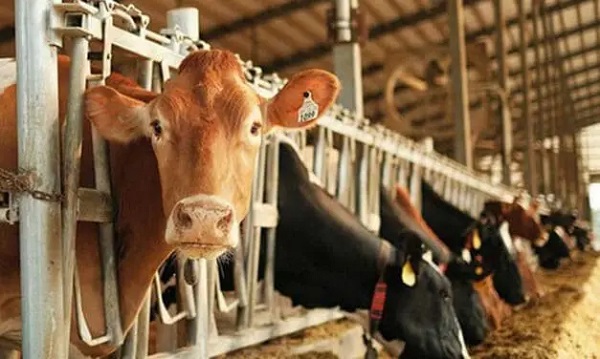armed forces
10 ways Justin Trudeau made Canada even worse in 2023

From LifeSiteNews
Many Canadians have woken up this year to find themselves living in the dystopian nation that is Prime Minister Justin Trudeau’s Canada.
According to polling, Canadians ranked Trudeau as the most disliked prime minister in 55 years. Countless other polls reveal Trudeau’s decline in popularity, with 371,169 Canadians calling for him to step down before the next election.
How did Trudeau finally lose popularity with Canadians after serving as prime minister for 8 years? Perhaps the destructive nature of his policies have finally been realized by Canadians. Or maybe the rising cost of living has caused Canadians to wake up to the reality of Trudeau’s Canada.
In any case, here are ten ways Trudeau and his government have destroyed Canada this year.
10. Destroying the integrity and morality of the Canadian military
In June, the Canadian military was roundly condemned for “raising the pride flag” in honor of the “2SLGBTQI+ communities.”
The same month, Canadian troops in Latvia were forced to purchase their own helmets and food when the Trudeau government failed to provide proper supplies, instead spending their resources on Danish soldiers. Weeks later, Trudeau lectured the same troops on “climate change” and disinformation.
In November, officials admitted that the nation’s military is shrinking to dangerously low numbers as Trudeau continues to push the LGBT agenda on Canadian soldiers. In addition to low recruitment, the military is struggling to retain soldiers.
A Canadian Armed Force member previously told LifeSiteNews that between the COVID vaccine mandates and pushing the LGBT agenda, Canadians soldiers have lost confidence in the military.
9. The seemingly never-ending Trudeau Foundation scandal
The Pierre Elliot Trudeau Foundation, named after Justin’s father, has undergone increased scrutiny regarding its connection to China this year.
In late September, MPs from the House of Commons unanimously voted to have the country’s Auditor General investigate the $125 million taxpayer endowment given to help found the Trudeau Foundation in 2001.
This investigation came just months after Canadian MPs from the House of Commons Public Accounts voted to begin an examination after a report surfaced detailing how the non-profit group received a $200,000 donation alleged to be connected to the Chinese Communist Party (CCP).
Following the release of this report, the entire board of directors, including the president and CEO, resigned.
Since then, Conservatives have accused Trudeau’s Liberal government of having ignored foreign interference because it was to their political benefit, an accusation that was only made more poignant when Trudeau appointed a “family friend” to be the “independent” investigator into alleged Chinese election meddling
8. Giving a carbon tax exemption, but only for Liberal-voting Canadians
In October, Trudeau announced he was pausing the collection of the carbon tax on home heating oil for three years, a provision that primarily benefits the Liberal-held Atlantic provinces. Most Canadians heat their homes with clean-burning natural gas, a fuel that will not be exempted from the carbon tax.
The biased exemption was roundly condemned by Canadians as well as many politicians, including Premiers Tim Houston of Nova Scotia, Blaine Higgs of New Brunswick, Doug Ford of Ontario, Danielle Smith of Alberta, and Scott Moe of Saskatchewan, who called for a carbon tax relief for all Canadians.
The carbon tax, framed as a way to reduce carbon emissions, has cost individual Canadians hundreds of extra dollars annually despite government rebates.
The increased costs are again expected to rise, as a recent report revealed that a carbon tax of more than $350 per tonne is needed to reach Trudeau’s net-zero goals by 2050.
Currently, Canadians living in provinces under the federal carbon pricing scheme pay $65 per tonne, but the Trudeau government has a goal of Canadians paying $170 per tonne by 2030.
Despite both Canadians and politicians supporting carbon tax exemptions for all, Trudeau and his government refuse to provide relief to Canadians.
7. Stripping Canada of her Christian heritage
In May, following the Coronation of King Charles III, the Trudeau government redesigned the Canadian crown that sits on the Royal Coat of Arms by removing all religious symbols.
The new design removed all religious symbols, replacing crosses and fleur-de-lis with maple leaves, snowflakes, and stars. The move caused some to accuse the Liberal Party of politicizing the symbol of the Crown and the Royal Coat of Arms.
This change is not Trudeau’s first attempt at removing religious symbols from Canada, despite the fact he is a baptized Catholic. In 2019, the government of Quebec passed a bill forbidding civil servants to display religious symbols on their persons while at work.
Additionally, Trudeau was forced to admit that “Christmas is not racist” following a Canadian Human Rights Commission report claiming that holidays such as Christmas and Easter are forms of discrimination and religious intolerance, and that observing the birth of Jesus Christ is “an obvious example” of a type of religious bias that is rooted in colonialism.
6. Restricting Canadians right to bear arms
This month, the Canadian federal government’s controversial gun grab bill, C-21, which bans many types of guns including all handguns while mandating a buyback program for certain rifles and shotguns, became law after Senators voted 60- 24 in favor of the bill.
In May, it passed in the House of Commons. After initially denying the bill would impact hunters, Trudeau eventually admitted that C-21 would indeed ban certain types of hunting rifles.
Alberta Premier Danielle Smith, along with premiers from no less than four additional provinces, opposed C-21. But, as with the carbon tax, the concerns of Canadians seemed to be of no concern to Trudeau.
5. Driving up food prices for Canadians through climate regulations
According to a November report, food costs for a family of four in Canada will increase by $700 in 2024 along with increases in household expenses like rent and utilities.
At the time, Canadian Taxpayer Federation Director Franco Terrazzano told LifeSiteNews, “The carbon tax makes grocery prices more expensive.”
“When Trudeau’s carbon tax makes it more expensive for farmers to grow food and truckers to deliver food, his carbon tax makes it more expensive for families to buy food,” he explained.
The report should not come as a surprise to Canadians considering a September report by Statistics Canada revealing that food prices are rising faster than the headline inflation rate – the overall inflation rate in the country – as staple food items are increasing at a rate of 10 to 18 percent year-over-year.
4. Wasting millions of taxpayer dollars on promoting the LGBT agenda
In June, the designated month of gay “pride,” the Trudeau government pledged $1.5 million in what it claims is “emergency funding” for “pride” month to fund increased security to organizations running parades.
Later in June, records revealed that the Liberal government gave $12 million for “pride” events during COVID lockdown years.
3. Blocking Canadians from viewing and sharing news on Facebook and Instagram
In June, Trudeau’s internet censorship law, Bill C-18, the Online News Act, was passed by the Senate. This law mandates that Big Tech companies pay to publish Canadian content on their platforms.
As a result, Meta, the parent company of Facebook and Instagram, blocked all access to news content in Canada, while Google has agreed to pay Canadian legacy media $100 million under the new legislation.
Critics of Trudeau’s recent laws, such as tech mogul Elon Musk, have commented that the legislation shows that “Trudeau is trying to crush free speech in Canada.”
Musk made the comments after the nation’s telecommunications regulator announced that due to new powers granted to it via the Online Streaming Act, certain podcasters will now have to “register” with the government.
2. Promoting increased access to abortion and spending taxpayer dollars to kill unborn Canadians
Like his father, Trudeau is a staunch supporter of killing unborn babies, and 2023 was not an exception. In January, Trudeau affirmed a woman’s “right to choose” when he was confronted with abortion victim photography on the streets of Hamilton, Ontario.
Additionally, Trudeau’s 2023 budget included a $36 million fund for abortion while at the same time including text which blasted America’s 2022 overturning of Roe v. Wade.
The Liberal government also promised it would supply American women with abortion pills if the pills were banned due to the country’s new pro-life laws.
1. Making Canada a leading provider of euthanasia worldwide
According to Health Canada, in 2022, 13,241 Canadians died by MAiD (Medical Assistance in Dying) lethal injections, which accounts for 4.1 percent of all deaths in the country for that year, and a 31.2 percent increase from 2021.
While the numbers for 2023 have yet to be released, all indications point to a situation even more grim than 2022.
The most recent reports show that MAiD is the sixth highest cause of death. But, in typical Trudeau fashion, it was not listed as such in Statistics Canada’s top 10 leading causes of death from 2019 to 2022. When asked why MAiD was suspiciously left off the list, the agency explained that it records the illnesses that led Canadians to choose to end their lives via euthanasia as the primary cause of death, not the actual cause of death.
Sickeningly, on March 9, 2024, MAiD is set to expand to include those suffering solely from mental illness. This is a result of the 2021 passage of Bill C-7, which first allowed the chronically ill – not just the terminally ill – to qualify for so-called doctor-assisted death.
The expansion of euthanasia to those with mental illness even has the far-left New Democratic Party (NDP) concerned. Dismissing these concerns, a Trudeau Foundation fellow actually called Trudeau’s euthanasia regime one of “privilege,” assuring the Canadian people that most of those being put to death are “white,” “well off,” and “highly educated.”
armed forces
Ottawa’s Newly Released Defence Plan Crosses a Dangerous Line

From the Frontier Centre for Public Policy
By David Redman
Canada’s Defence Mobilization Plan blurs legal lines, endangers untrained civil servants, and bypasses provinces. The Plan raises serious questions about military overreach, readiness, and political motives behind rushed federal emergency planning.
The new defence plan looks simple on paper. The risks are anything but.
Canadians have grown used to bad news about the Canadian Armed Forces (CAF), but the newly revealed defence mobilization plan is in a category of its own.
After years of controversy over capability, morale, and leadership challenges, the military’s senior ranks now appear willing to back a plan that misunderstands emergency law, sidelines provincial authority, and proposes to place untrained civil servants in harm’s way.
The document is a Defence Mobilization Plan (DMP), normally an internal framework outlining how the military would expand or organize its forces in a major crisis.
The nine-page plan was dated May 30, 2025, but only reached public view when media outlets reported on it. One article reports that the plan would create a supplementary force made up of volunteer public servants from federal and provincial governments. Those who join this civil defence corps would face less restrictive age limits, lower fitness requirements, and only five days of training per year. In that time, volunteers would be expected to learn skills such as shooting, tactical movement, communicating, driving a truck, and flying a drone. They would receive medical coverage during training but not pensionable benefits.
The DMP was circulated to 20 senior commanders and admirals, including leaders at NORAD, NATO, special forces, and Cybercom. The lack of recorded objection can reasonably raise concerns about how thoroughly its implications were reviewed.
The legal context explains much of the reaction. The Emergencies Act places responsibility for public welfare and public order emergencies on the provinces and territories unless they request federal help. Emergency response is primarily a provincial role because provinces oversee policing, natural disaster management, and most front-line public services. Yet the DMP document seems to assume federal and military control in situations where the law does not allow it. That is a clear break from how the military is expected to operate.
The Emergency Management Act reinforces that civilian agencies lead domestic emergencies and the military is a force of last resort. Under the law, this means the CAF is deployed only after provincial and local systems have been exhausted or cannot respond. The Defence Mobilization Plan, however, presents the military as a routine responder, which does not match the legal structure that sets out federal and provincial roles.
Premiers have often turned to the military first during floods and fires, but those political habits do not remove the responsibility of senior military leaders to work within the law and respect their mandate.
Capacity is another issue. Combat-capable personnel take years to train, and the institution is already well below its authorized strength. Any task that diverts resources from readiness weakens national defence, yet the DMP proposes to assign the military new responsibilities and add a civilian component to meet them.
The suggestion that the military and its proposed civilian force should routinely respond to climate-related events is hard to square with the CAF’s defined role. It raises the question of whether this reflects policy misjudgment or an effort to apply military tools to problems that are normally handled by civilian systems.
The plan also treats hazards unrelated to warfighting as if the military is responsible for them. Every province and territory already has an emergency management organization that monitors hazards, coordinates responses and manages recovery. These systems use federal support when required, but the military becomes involved only when they are overwhelmed. If Canada wants to revive a 1950s-style civil defence model, major legislative changes would be needed. The document proceeds as if no such changes are required.
The DMP’s training assumptions deepen the concerns. Suggesting that tasks such as “shooting, moving, communicating, driving a truck and flying a drone” can be taught in a single five-day block does not reflect the standards of any modern military. These skills take time to learn and years to master.
The plan also appears aligned with the government’s desire to show quick progress toward NATO’s defence spending benchmark of two percent of GDP and eventually five percent. Its structure could allow civil servants’ pay and allowances to be counted toward defence spending.
Any civil servant who joins this proposed force would be placed in potentially hazardous situations with minimal training. For many Canadians, that level of risk will seem unreasonable.
The fact that the DMP circulated through senior military leadership without signs of resistance raises concerns about accountability at the highest levels. That the chief of the defence staff reconsidered the plan only after public criticism reinforces those concerns.
The Defence Mobilization Plan risks placing civil servants in danger through a structure that appears poorly conceived and operationally weak. The consequences for public trust and institutional credibility are becoming difficult to ignore.
David Redman had a distinguished military career before becoming the head of the Alberta Emergency Management Agency in 2004. He led the team in developing the 2005 Provincial Pandemic Influenza Plan. He retired in 2013. He writes here for the Frontier Centre for Public Policy.
armed forces
Global Military Industrial Complex Has Never Had It So Good, New Report Finds
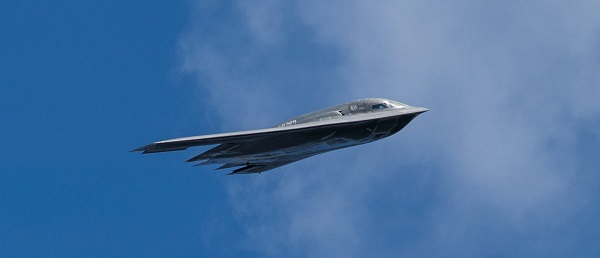

From the Daily Caller News Foundation
The global war business scored record revenues in 2024 amid multiple protracted proxy conflicts across the world, according to a new industry analysis released on Monday.
The top 100 arms manufacturers in the world raked in $679 billion in revenue in 2024, up 5.9% from the year prior, according to a new Stockholm International Peace Research Institute (SIPRI) study. The figure marks the highest ever revenue for manufacturers recorded by SIPRI as the group credits major conflicts for supplying the large appetite for arms around the world.
“The rise in the total arms revenues of the Top 100 in 2024 was mostly due to overall increases in the arms revenues of companies based in Europe and the United States,” SIPRI said in their report. “There were year-on-year increases in all the geographical areas covered by the ranking apart from Asia and Oceania, which saw a slight decrease, largely as a result of a notable drop in the total arms revenues of Chinese companies.”
Notably, Chinese arms manufacturers saw a large drop in reported revenues, declining 10% from 2023 to 2024, according to SIPRI. Just off China’s shores, Japan’s arms industry saw the largest single year-over-year increase in revenue of all regions measured, jumping 40% from 2023 to 2024.
American companies dominate the top of the list, which measures individual companies’ revenue, with Lockheed Martin taking the top spot with $64,650,000,000 of arms revenue in 2024, according to the report. Raytheon Technologies, Northrop Grumman and BAE Systems follow shortly after in revenue,
The Czechoslovak Group recorded the single largest jump in year-on-year revenue from 2023 to 2024, increasing its haul by 193%, according to SIPRI. The increase is largely driven by their crucial role in supplying arms and ammunition to Ukraine.
The Pentagon contracted one of the group’s subsidiaries in August to build a new ammo plant in the U.S. to replenish artillery shell stockpiles drained by U.S. aid to Ukraine.
“In 2024 the growing demand for military equipment around the world, primarily linked to rising geopolitical tensions, accelerated the increase in total Top 100 arms revenues seen in 2023,” the report reads. “More than three quarters of companies in the Top 100 (77 companies) increased their arms revenues in 2024, with 42 reporting at least double-digit percentage growth.”
-

 Uncategorized2 days ago
Uncategorized2 days agoMortgaging Canada’s energy future — the hidden costs of the Carney-Smith pipeline deal
-

 International2 days ago
International2 days agoAustralian PM booed at Bondi vigil as crowd screams “shame!”
-
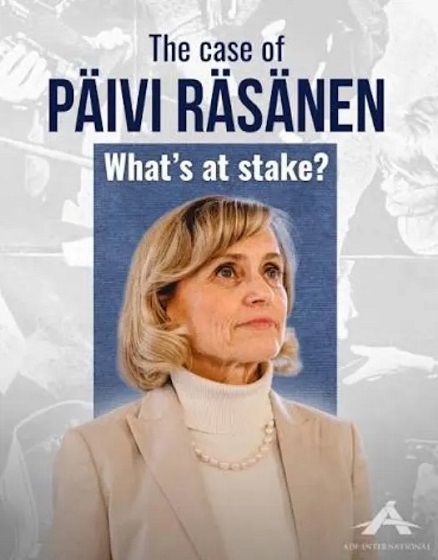
 Opinion2 days ago
Opinion2 days agoReligion on trial: what could happen if Canada passes its new hate speech legislation
-
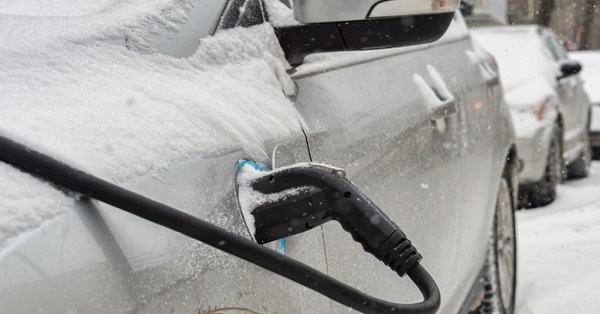
 Automotive1 day ago
Automotive1 day agoCanada’s EV gamble is starting to backfire
-
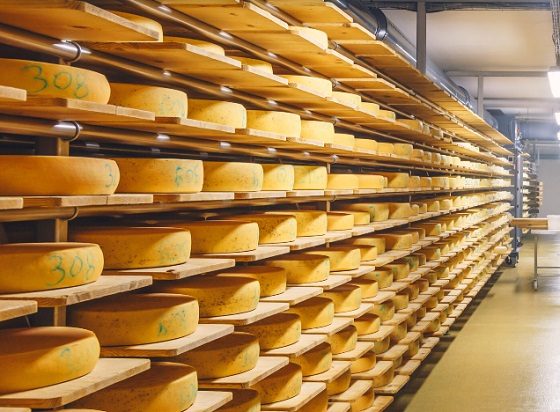
 Agriculture1 day ago
Agriculture1 day agoEnd Supply Management—For the Sake of Canadian Consumers
-

 Alberta24 hours ago
Alberta24 hours agoAlberta Next Panel calls to reform how Canada works
-

 Environment22 hours ago
Environment22 hours agoCanada’s river water quality strong overall although some localized issues persist
-

 Digital ID14 hours ago
Digital ID14 hours agoCanadian government launches trial version of digital ID for certain licenses, permits









